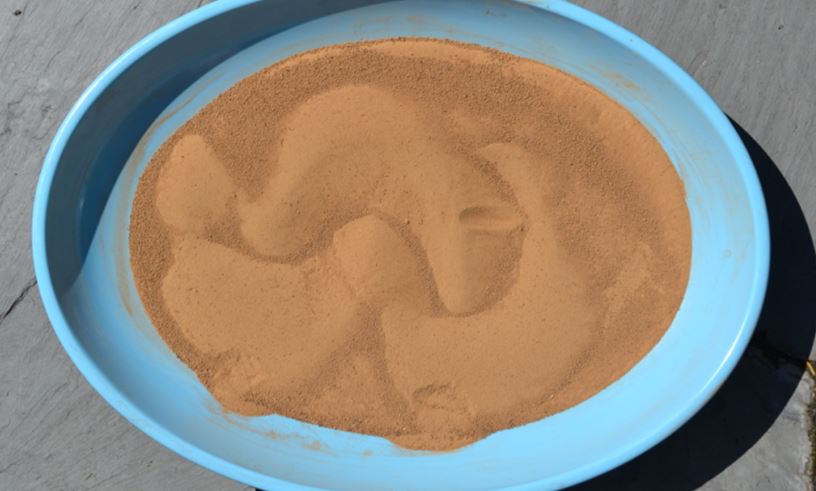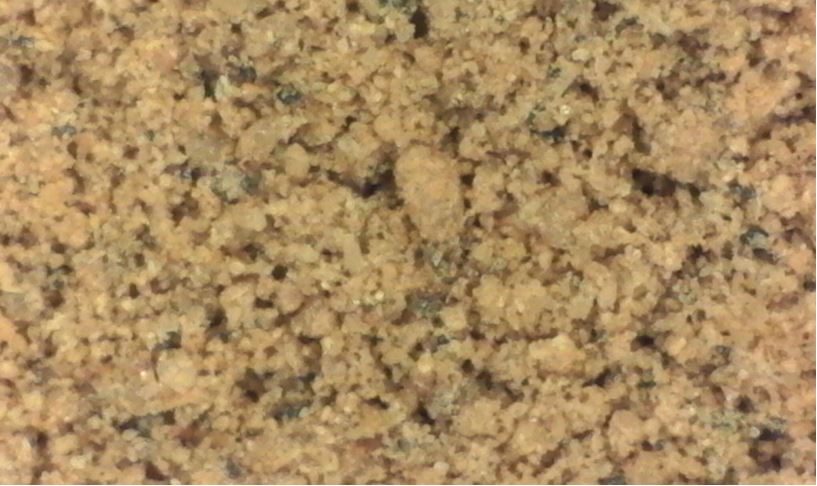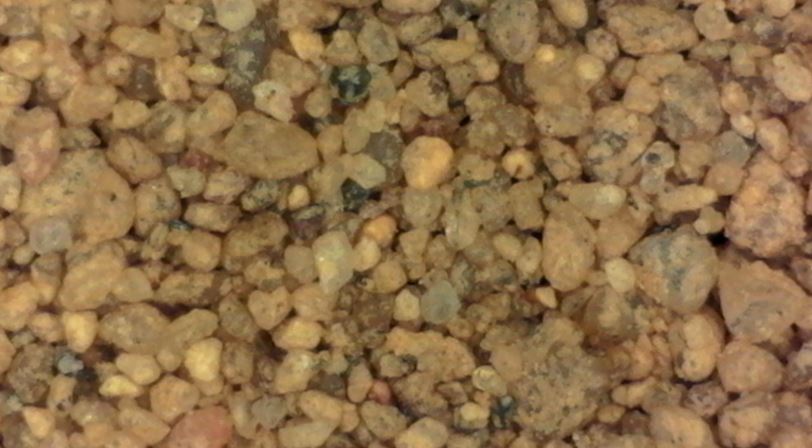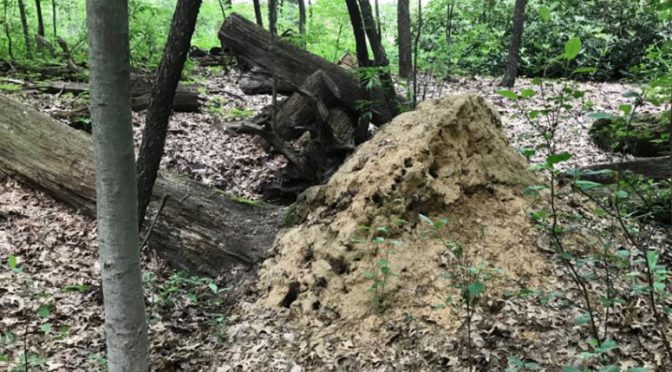The global pandemic has all of us re-thinking our daily lives. I had to cancel (or at best postpone) a May trip to collect sands from New England beaches. With my time at home, I chose to walk about my neighborhood. While doing this I was always alert to opportunities to collect sand. They would certainly not be as exotic as Cape Cod or the creeks in the Berkshires of western MA, but perhaps they could still be interesting.
One location I wanted to sample was in a small town park close to my home which contained a nice half-mile trail through the woods. My home sits atop glacial lake sediments (or dunes created when the glacial lake emptied). I have dug for fine sand there (Sand Times, vol 1 #1, pg. 2). The surface geology map of western NY suggests this park might be outside the lake boundaries. Might the sand there be different?
But, I would need to get below the organic forest cover that I imagined might be more than a foot deep. Should I take a shovel in the park and dig? I had decided this was probably not prudent within a town park, even if I went at night and wore dark clothes! But in early May, I strolled a bit off the trail chasing a large toad. He managed to escape my camera, but I spotted a large old fallen tree in the distance. The root ball was filled with yellow-orange sand that had been exhumed when the tree fell many many moons ago. As is always the case I had a sample bag in my pocket and I carved off a bit for later scrutiny. Unlike the toad, the fallen tree and the sand exposed in the root ball did not escape my camera (see the cover photo for this post).
The sand required very little prep once home. It was bone dry and aside from a few small pieces of organic debris that could be extracted with tweezers it was ready for inspection. A quick look and I knew it was different from my backyard sand. In fact, it was not technically sand as it was too fine-grained. I could see the grains with a loupe and with a digital microscope, but this was clearly silt, and it was gritty and dominated by quartz. It is uniformly a light orange color, heavily stained by iron.

It is my interpretation that the sand/silt in Wynd Woods Park is glacial loess. Loess is generally composed of quartz that is of silt size. It forms at the edge of deserts where the silt is carried by wind and deposited. But glaciers grind rocks (and quartz) to silt size also and streams can carry the powder to the edge of a glacier where the silt fraction can be picked up by prevailing winds and deposited as loess. If the grains are smaller than silt size, the material is referred to as rock flour. In this case, I can observe the grains with the digital microscope and feel the grittiness between my fingers. This implies silt and therefore glacial loess.

What is interesting about glacial loess is that the process of formation requires three separate weathering events. First, grinding and transport by glaciers, in this case, the continental glaciation that covered New York state until about 12,000 years ago. Second, transport and concentration of large amounts of glacial material by meltwater. And finally, there must be aeolian transport and deposition of just the silt-size fraction.

